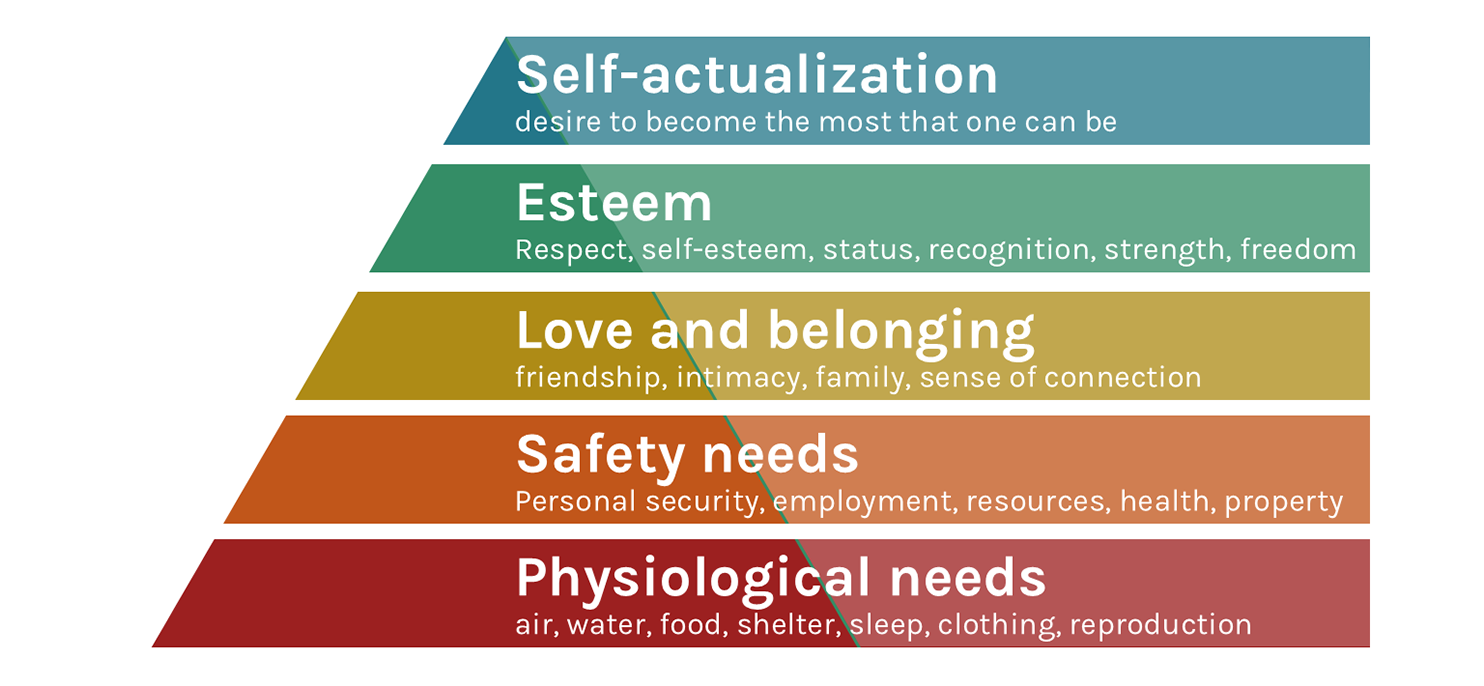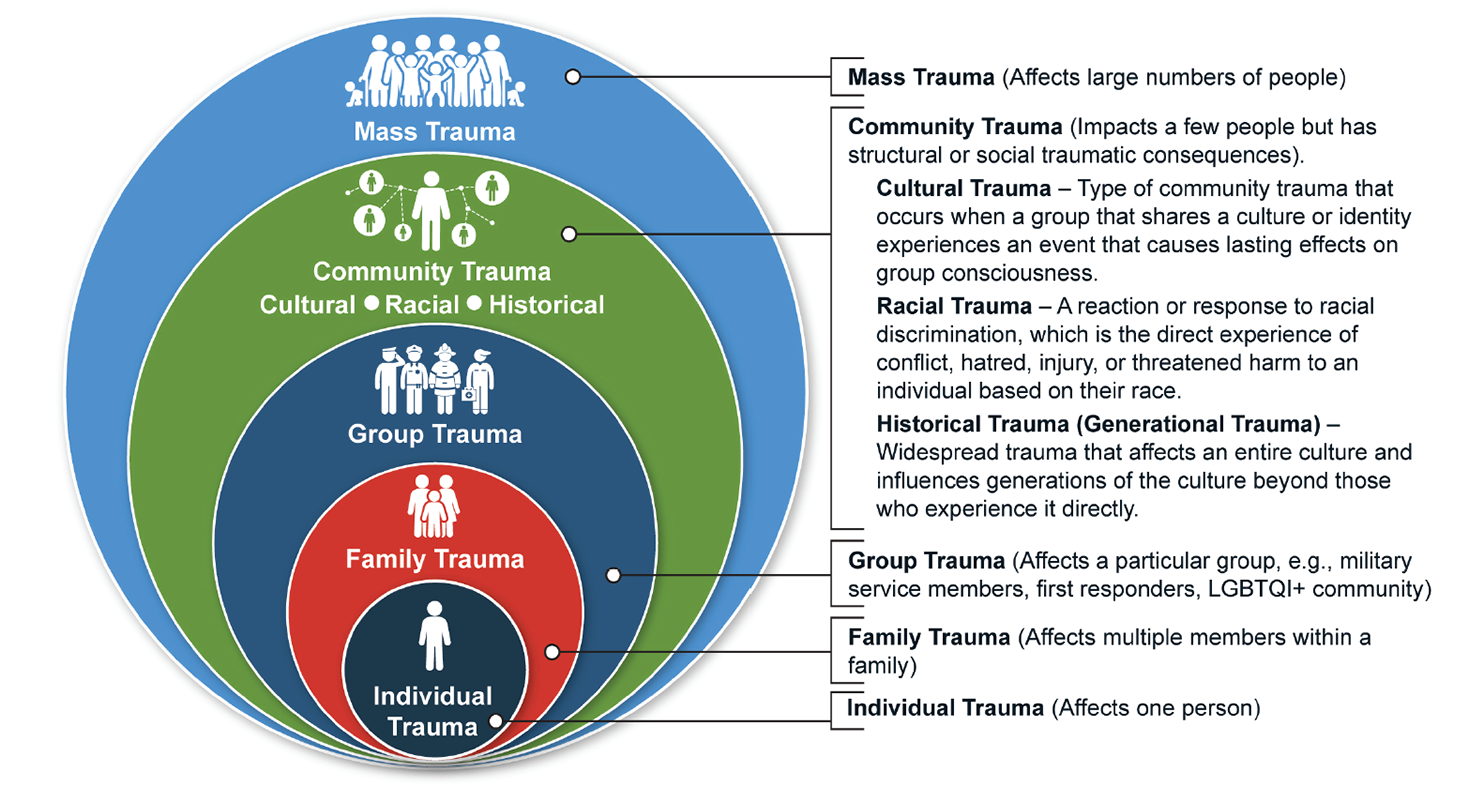Designing to Thrive

Over the last decade, a growing awareness of how many individuals and families are impacted by traumatic events and circumstances has fostered a deeper appreciation of the need to help address the long-term effects. Whether experienced individually or at a larger cultural and racial scale, many people face day-to-day conditions in the built environment that exacerbate the conditions associated with a pre-existing trauma. The Substance Abuse and Mental Health Services Administration (SAMHSA) cites studies finding that 61% of men and 51% of women in the U.S. will experience at least one traumatic event in their lifetime.
Knowing that the impacts of trauma can repeatedly seep into the lives of millions of individuals brings a heightened human perspective to the role the built environment can play in supporting people through a larger healing and recovery process. Relating this to Abraham Maslow’s Hierarchy of Needs, we need to understand how a space or place can go beyond meeting a user’s physiological and safety needs and support their longer journey towards belonging, esteem and self-actualization.
While many healthcare and clinical settings are designed to help individuals address their trauma, there is growing awareness of how other building types and public spaces can directly and indirectly impact trauma and related stress. From broader community planning and design considerations to specific living conditions like housing, we are seeing an important movement to better understand each facet of design as an active set of contributors to an individual’s holistic well-being.
The Role of the Designer
In the past, providing shelter may have been interpreted as satisfying what an individual needed to thrive, whether or not they were able to feel at home there. Recognition of this distinction forms the foundation of what is increasingly described as Trauma-Informed Design (TID). Similar to the lens that trauma-informed-care provides for healthcare, TID provides an important platform for architects, landscape architects, interior designers and planners to address issues that may otherwise cause or perpetuate trauma and significantly diminish quality of life for individuals and their families.
The evolution of TID is providing an increasing number of design strategies and techniques we can adopt to create spaces that foster comfort, healing and a sense of safety while complementing other supportive services. We are also seeing a new set of aspirational outcomes for TID projects, like these outlined by Design Resources for Homelessness:
- Dignity and Self Esteem
- Empowerment and Personal Control
- Security, Privacy and Personal Space
- Stress Management
- Sense of Community
- Beauty and Meaning
While design alone cannot address all the triggers or impacts of trauma, we can be much more intentional and thoughtful as designers about the spaces and experiences we create through our work. TID methodologies are not aesthetic or decorative treatments, but instead thoughtfully integrated strategies and built outcomes. They work to not only mitigate the ways in which physical spaces may exacerbate past trauma experienced by residents, employees, visitors and patients, but also to create spaces of healing, recovery, comfort and affirmation.
Trauma survivors may face a range of experiences that not only affect them individually but their entire family and community, as well. These experiences can include armed combat, poverty, homelessness, loss of a loved one, incarceration and domestic violence. There is a growing body of first-hand knowledge identifying the critical factors in our built environment that have the potential to retraumatize people. These factors can disproportionately impact people of color, women, and children, as well as people with physical or mental health issues.
Addressing these impacts requires a more robust and thoughtful approach to design processes and outcomes. For example, housing design for individuals and families that have experienced varying levels of trauma must not only satisfy fundamental needs for shelter, but also address important characteristics related to illumination, sight lines, access and unrestricted circulation.
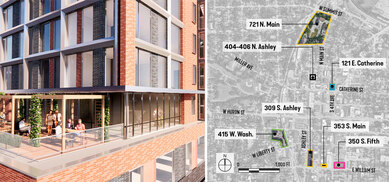
An initial concept for a mix of affordable and market rate housing, part of a multisite development strategy for the Ann Arbor Housing Commission. Source: SmithGroup/AAHC
The Ann Arbor Housing Commission (AAHC) advocates for holistic design practices centered around residents and their needs. These practices include recognition of the range of traumas frequently felt by people who have experienced housing insecurity or homelessness. SmithGroup’s initial planning and design concepts for affordable housing throughout Ann Arbor provided inviting and open spaces for all ranges of affordability, including permanently supportive housing residents.
These efforts reflect part of a multi-site housing development strategy led by AAHC. In each case, the design’s generous daylighting, viewsheds and residential benefits have universal appeal, while in a trauma-informed context they also provide dignity and an enhanced sense of connection and well-being. As SAMHSA notes, “Trauma-Informed Design is important because it may help lower a person’s emotional stress or tension that they are feeling and allow them to successfully move forward with their lives.”
Improving Quality of Life for All
The impacts and challenges posed by substantial trauma on youth are particularly onerous. As the National Reentry Resource Center’s brief Trauma-Informed Practice for Reentry Providers notes, “as youth exposed to early trauma move through adolescence and into adulthood, [they] may be at risk for challenges that include PTSD and other mental health disorders, suicidality, and substance use disorders.”
Approaches that can help mitigate the impacts of traumatic experiences on children and youth and engender a sense of support and safety are a central facet of trauma-informed design. It is essential for TID to be engaged with a focus on children, both within a family and the community at large. However, it is important to note that the design methodologies woven into TID leverage broadly applicable approaches that can improve children’s comfort, engagement and confidence.
The SmithGroup team’s design for the City of South San Francisco Community Civic Campus is a great example of what we can learn from a design that while not driven by TID considerations provides the benefits that TID-advocates are looking for. There is a lot for children to love woven into a design that integrates community services, a library and range of indoor and outdoor recreational amenities. Careful attention was paid to supporting a wide range of ages and skill levels, while the use of color, visible physical access and daylight illumination provides a feeling of comfort and safety throughout.



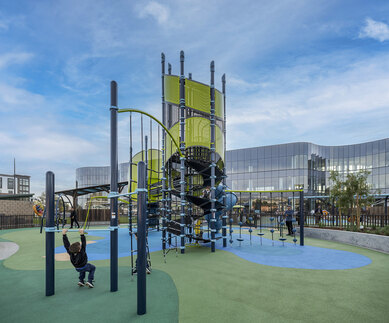
City of South San Francisco Community Civic Campus, photos ©Tim Griffith
Another example of how we can see TID principles at work within a universal design framework to support youth is SmithGroup’s design for the Racquet Up! Detroit facility in Detroit, Michigan. While also not driven by TID considerations, this youth athletic facility provides a dynamic atmosphere that supports interaction, education, healthy competition and friendship. Comfortable, engaging and well daylit, RacquetUp! Detroit’s interior gathering and collaboration spaces are open and accessible, providing multiple, uninterrupted pathways and views from the interior to the exterior. The space provides an active, flexible and engaging environment that supports health, fosters community and has become an important “second place” for youth in northwest Detroit.

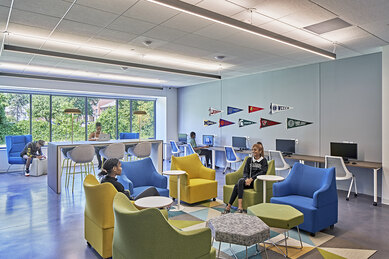
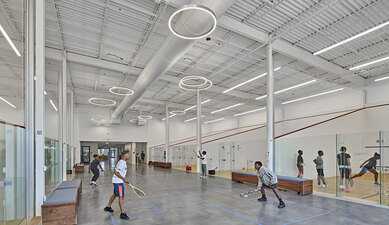
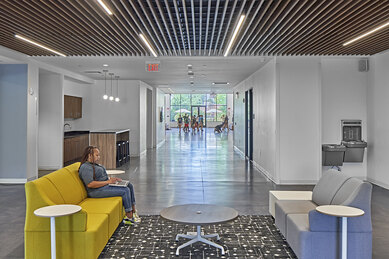
Racquet Up! Detroit in Detroit, Michigan. Photos: Jason Keen
While design alone can’t address the full breadth of needs and challenges facing individuals, it can provide a more supportive and empowering environment. With TID-informed design methodologies, the spaces we create and inhabit can become more responsive and equitable places of support, safety and improved quality of life for a wider range of people. To realize this potential, each of us within the design industry must be ready to engage the issues, to listen and learn what people need, and to respond with a higher level of empathy and an aspiration for greater benefit and impact.
